
English Lectures / lipids 2 ENG
.pdf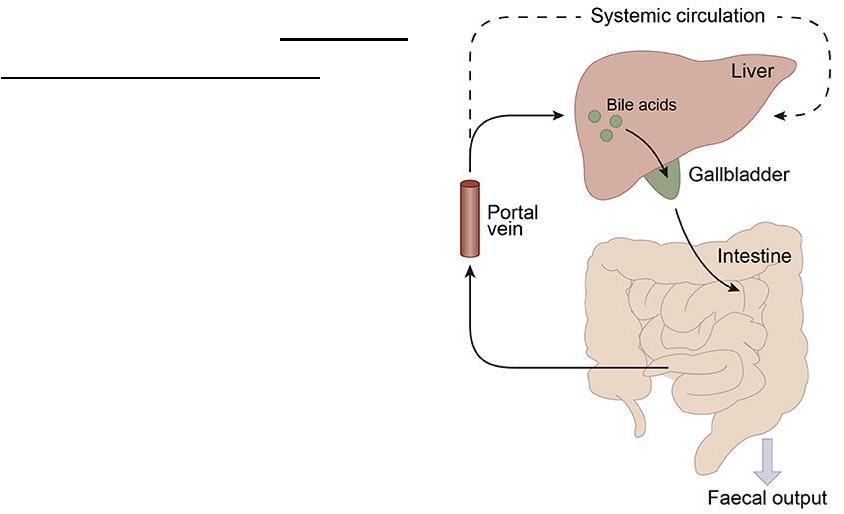
Bile Acid Circulation
• Bile acids partially return to the intestinal lumen, but mainly undergo the process of hemato-hepato-enteric circulation: they are absorbed, returned to the liver with blood flow and re-secreted into the intestinal lumen as part of the bile.
• Due to the repeated circulation of bile acids, their small amount (4-6 g) is sufficient to absorb a large number of
hydrophobic products.
11
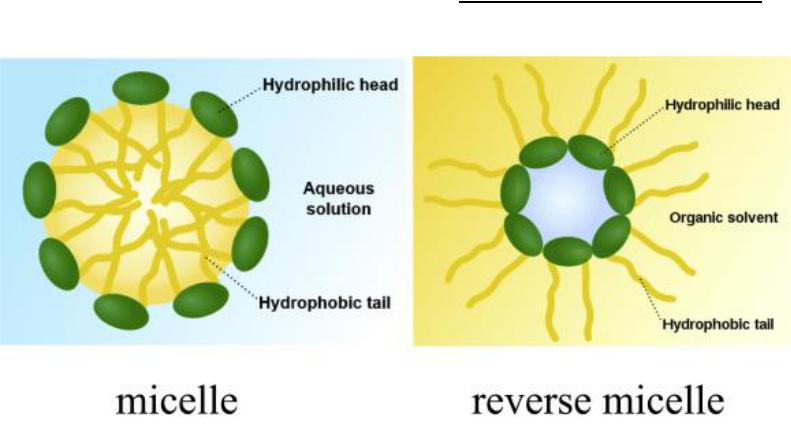
Micelles
•The main functions of bile acids are the formation of micelles – water-soluble structures in which hydrophobic fatty acids, cholesterol, are embedded.
•In the process of absorption, micelles disintegrate, and all water-insoluble substances undergo absorption.
12
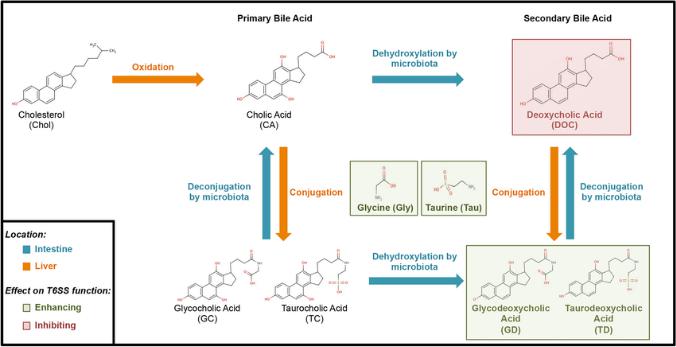
Metabolic conversion of bile acids
•Primary bile acids are formed exclusively in the cytoplasm of liver cells. The biosynthesis process begins with the hydroxylation of cholesterol at C-7 and C-12, and epimerization at C-3, followed by restoration of the double bond in ring B and shortening of the side chain by three carbon atoms.
•The limiting step is C-7 hydroxylation involving 7α-hydroxylase. Cholic acid serves as an inhibitor of the reaction, so bile acids regulate the rate of cholesterol degradation.
•Conjugation of bile acids takes place in two stages. First, CoA esters of bile acids are formed, and then the actual conjugation stage with glycine or taurine follows, with the formation, for example, of glycocholic and taurocholic acids. Bile is drained into the intrahepatic bile ducts and accumulates in the gallbladder.
13

Metabolic conversion of bile acids
• Intestinal microflora produces enzymes that chemically modify bile acids. Firstly, the peptide bond is hydrolyzed (deconjugation), and secondly, secondary bile acids are formed due to dehydroxylation of C-7. However, most of the bile acids are absorbed by the intestinal epithelium and, once it enters the liver, is again secreted in the composition of bile.
• With an unfavorable composition of bile, individual components may crystallize. This entails the deposition of gallstones, which most often consist of cholesterol and calcium salts of bile acids (cholesterol stones), but sometimes these stones also include bile pigments.
14
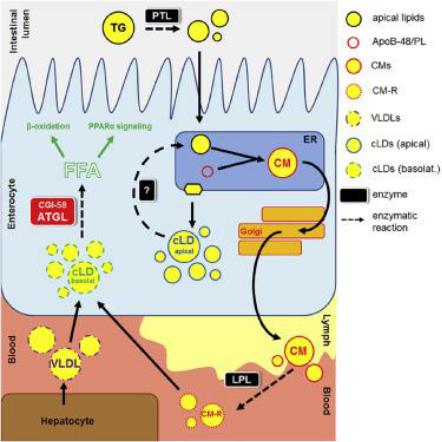
Lipid resynthesis in the mucosa of the small intestine
Resynthesis is the synthesis of lipids characteristic of the human body from the components of digestion of food lipids.
•Missing fatty acids, alcohols, necessary for resynthesis, can be synthesized in the cells of the intestinal mucosa (enterocytes) and secreted as part of bile.
•The resynthesis of triacylglycerols occurs from the active form of glycerol and fatty acids sequentially through the stage of monoacylglycerol, diacylglycerol.
•Resynthesis of glycerophospholipids occurs from phosphatidic acid, phosphocholine and diacylglycerols.
15
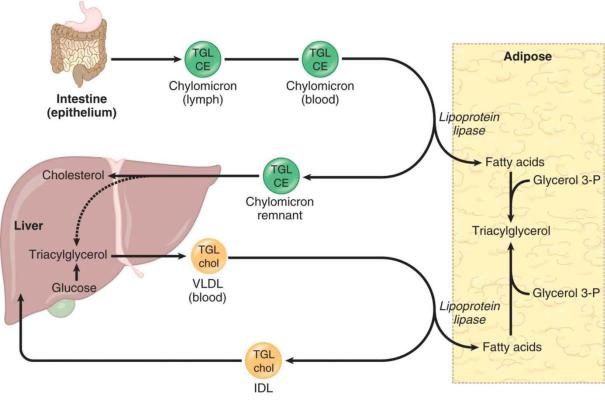
Blood lipid transport
Hydrophobic lipids cannot be transported by blood on their own. They are carried in the following forms:
•Lipoproteins – protein-lipid complexes;
•chylomicrons – lipid droplets formed in the milky juice;
•free fatty acids are transported complete with albumin.
16
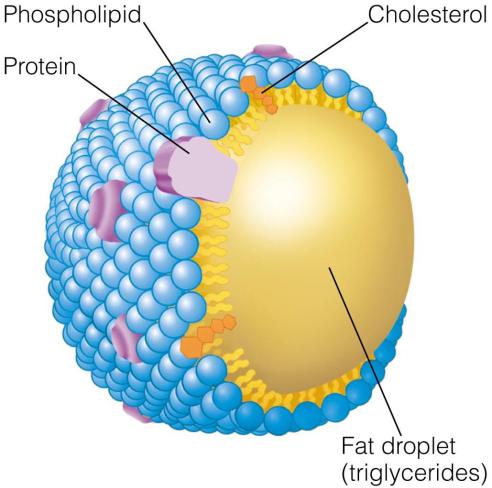
Chylomicrons
•Chylomicrons are the smallest lipid droplets with sizes of about 500 nm, consisting of 2% protein and 90% TAG.
•Chylomicrons are synthesized in the intestinal mucosa, are considered a transport form of food (exogenous) lipids in the body.
•Chylomicrons first enter the lymph, and then spread by blood mainly to fat depots (> 50%), as well as to the liver, lungs, and muscle tissue.
17
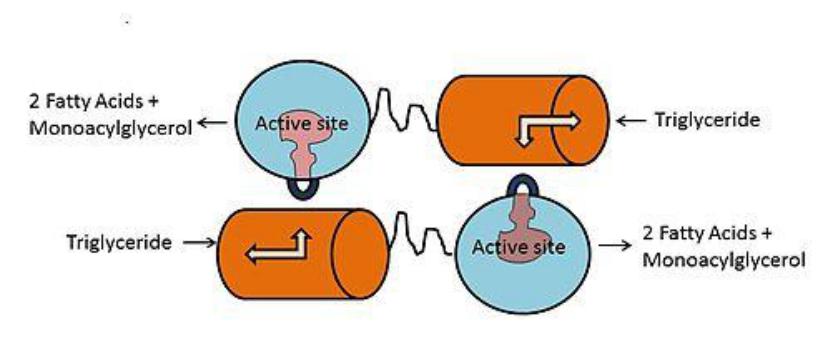
Lipoprotein lipase (LPL)
•Lipoprotein lipase (LPL) is an enzyme of the capillary endothelium of various organs that hydrolyzes chylomicron lipids and VLDL and thus promotes the incorporation of triacylglycerols fatty acids into tissues.
•In the process of hydrolysis, triacylglycerol is first converted to diacylglycerol, and then to monoacylglycerol, which is split into glycerol and free fatty acid.
18
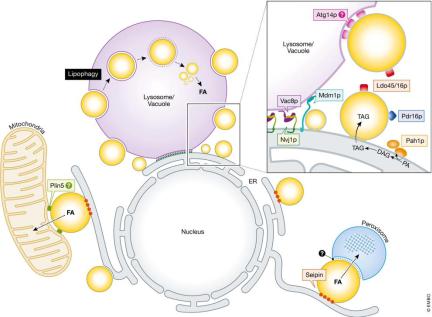
Neutral Fat Metabolism
•Metabolism of neutral fat is a combination of the processes of digestion and absorption of neutral fats (triglycerides) and their decomposition products in the gastrointestinal tract, the intermediate exchange of fats and fatty acids and the removal of fats, as well as their metabolic products from the body.
•With starvation, human fats are depleted in 5-7 weeks, while glycogen is completely consumed in about a day.
•If the intake of fat exceeds the body's energy needs, then the fat is deposited in specialized cells of adipose tissue.
•In addition, if the amount of incoming carbohydrates is more than is necessary for deposition in the form of glycogen, then part of the glucose also turns into fats.
19
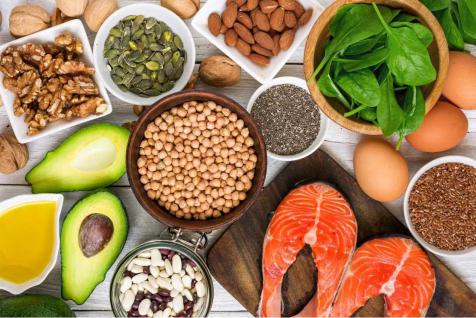
Fat sources
Fats in adipose tissue accumulate as a result of three processes:
1. come from exogenous food fats
2. come from endogenous fats synthesized in the liver from glucose
3. formed from glucose in the cells of adipose tissue
20
